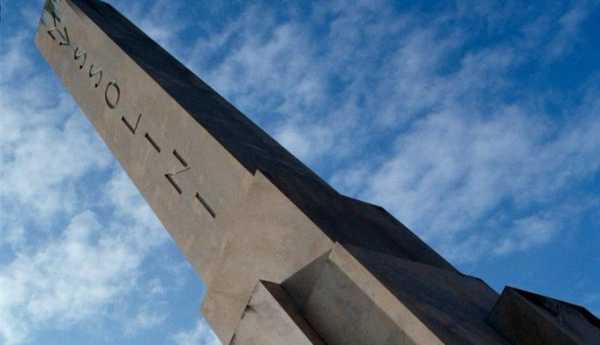
More than 1,400 monuments, street signs and plaques honouring fascism have been put online in the first nationwide attempt to document the symbols of Benito Mussolini’s regime that still dot the urban landscape of Italy.
While Germany systematically scrubbed clean any sign of Adolf Hitler’s Nazi regime after World War Two, Italians took a much less rigorous approach to removing traces of their Mussolini’s 21-year dictatorship.
As an example, one hundred years after Benito Mussolini grabbed power in Rome, his photograph still hangs in the prime minister’s official residence, striking evidence that Italy has yet to shake off its fascist legacy.
The “places of fascism” website (www.luoghifascismo.it) was unveiled on Tuesday (22 November) by the Istituto Nazionale Parri, a Milan-based historical research institute, following four years of research.
It lists famous landmarks, such as the obelisk in Rome marked in giant lettering with “Mussolini Dux” (Mussolini leader), as well as more obscure memorials up and down the country.
Obelisk dedicated to Mussolini is still standing in front of the Stadio Olimpico, Rome. Recurrent debate on the media on whether to raze it. pic.twitter.com/1OxN0y6Dcx
— Federico Bernardi (@FedericoDoe) August 18, 2017
“It is a partial census … We know very well that it’s not complete, it’s very much a work in progress,” Igor Pizzirusso, a public history researcher and webmaster of the site, told Reuters.
The website will be expanded with submissions from the public, subject to verification by experts, Pizzirusso said, adding that about a dozen suggestions came in Tuesday after the website was publicised in La Repubblica newspaper.
Italy has a complicated relationship with its fascist past, now under greater scrutiny as Giorgia Meloni, a hard-right politician with a teenage past as a Mussolini fan, was sworn in as prime minister last month.
Meloni, who won Sept. 25 elections, insists she and her Brothers of Italy party have embraced mainstream conservatism, declaring in August that “the Italian right has handed fascism over to history for decades now”.
Nevertheless, the party and its right-wing allies in October went on to elect as speaker of the Senate Ignazio La Russa, a collector of Mussolini memorabilia who once said that the fascist one-armed salute was more hygienic than handshakes.
“Germany has a past that can never pass. They can never forget the Holocaust or Hitler,” said British historian Paul Corner, who last month published a book, “Mussolini in Myth and Memory”, that delves into Italy’s persistent nostalgia for fascism.
“Italy has a past that just doesn’t present a problem. No-one is asking that these monuments to fascism be destroyed. They just blend in,” he told Reuters.
The country last month marked 100 years since Mussolini’s blackshirt supporters’ marched on Rome to seize power. To avoid bloodshed, the king simply handed him government.
Corner estimates that as many as 500,000 Italians died as a result of Mussolini’s catastrophic decision to fight alongside Hitler in World War Two – including some 7,700 Italian Jews sent to Nazi death camps.
“After the war, Italy presented itself as an innocent victim of fascism, but dictatorship cannot survive for 20 years without the consensus and complicity of its people,” Corner said.
While there are small memorials around Rome for some of fascism’s victims, there are none for those who killed by Italy’s disastrous efforts to carve out a new empire, including hundreds of thousands of Ethiopians.
Street names still commemorate those colonial exploits, including Via Amba Aradam, which marks a 1936 battle when fascist troops illegally bombarded Ethiopian soldiers with mustard gas, murdering thousands.
(Edited by Georgi Gotev)
Source: euractiv.com



